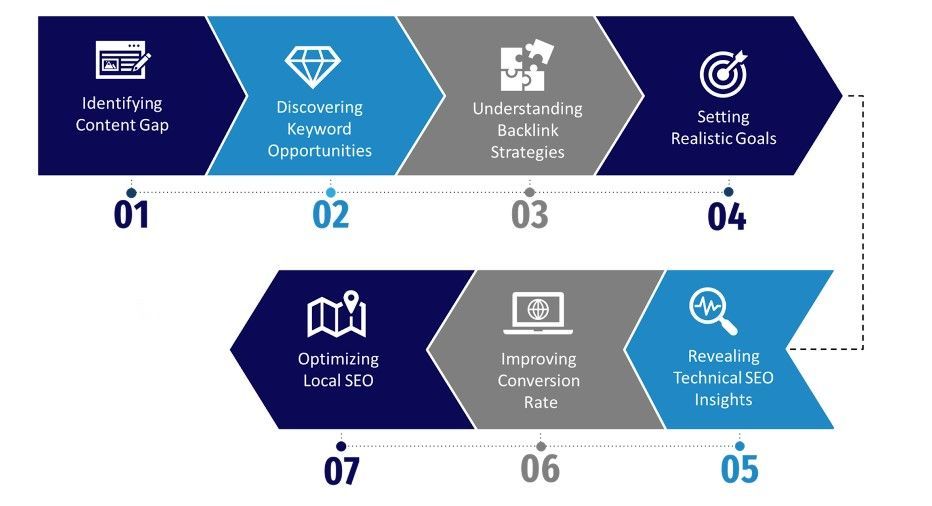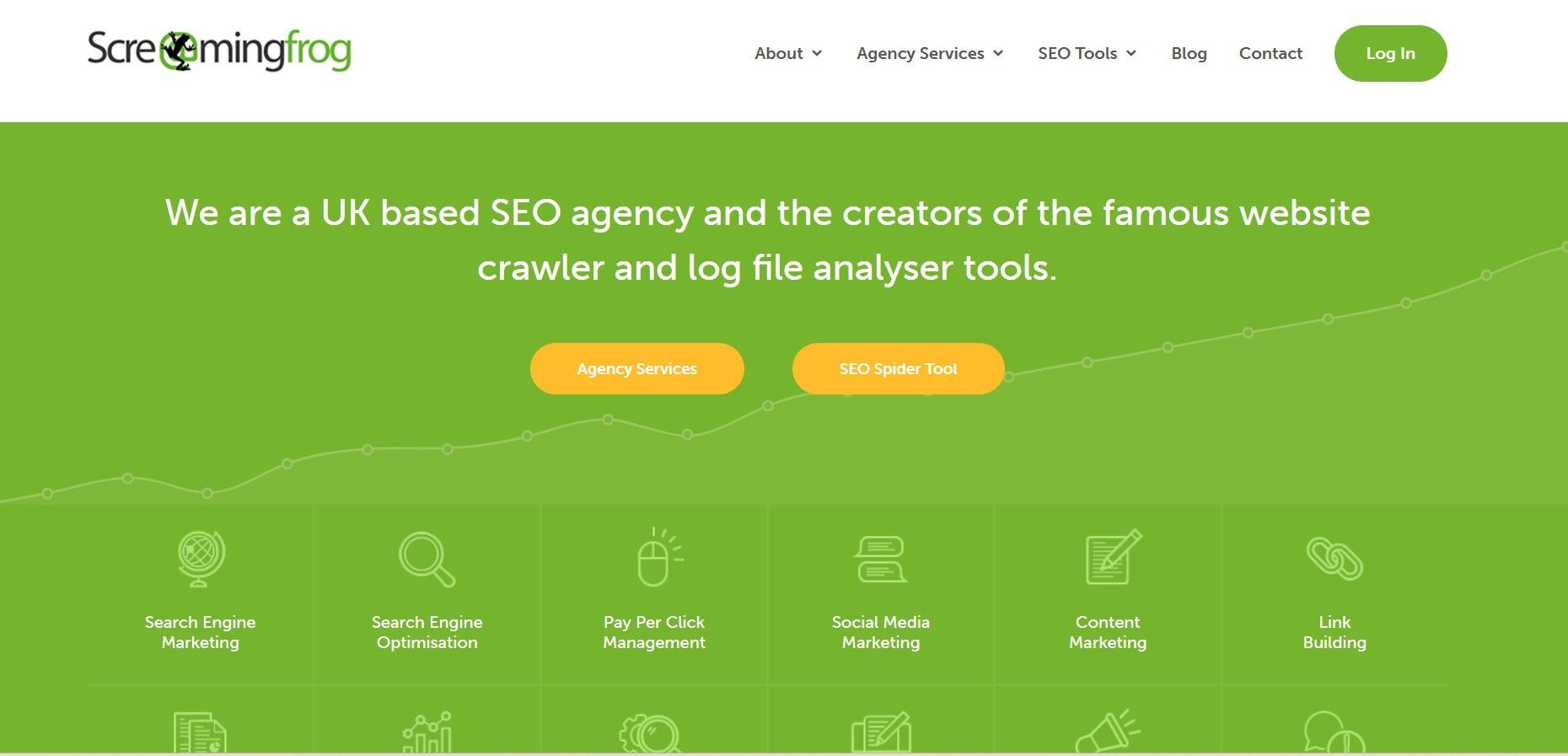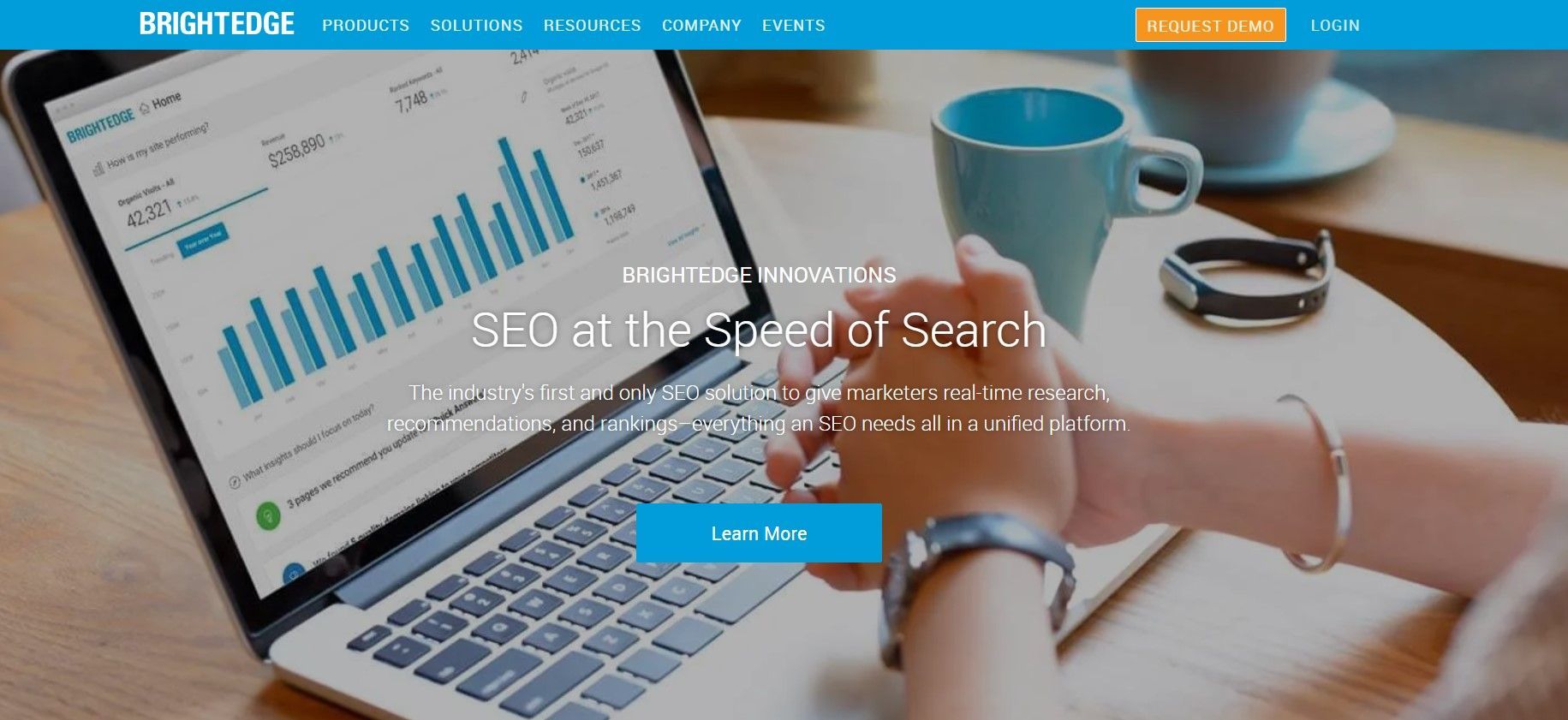Search Engine Optimization (SEO) has significantly evolved over the last couple of years mainly for two reasons: the rise of generative AI such as ChatGPT, Gemini, etc., and multiple core and spam updates by Google. The SEO strategies that were effective 3-4 years before are not working anymore. Competition for the top positions in SERPs has reached new heights.
According to clickstream data from Datos (an SEMrush company), Google takes around 30% of the total clicks in the US and EU regions to its own affiliated websites.

Image source: sparktoro
For big brands, staying ahead of the competition is now more than just a goal; it’s necessary to ensure the websites are getting good traffic, as online shopping value is expected to be more than $4.1 trillion worldwide by the end of 2024 (Statista).
Brands can develop more effective SEO strategies for higher rank in SERPs and better conversion rates by understanding the competitors and their strategies. However, competitor analysis is more than just inspecting what strategies your competitors are implementing. It is a continuous process of learning, evolving, and finding opportunities to do even better next time.
Digital Loop is proud to partner with some big enterprise companies to deliver enterprise SEO and analytics solutions that drive growth and maximize visibility. We think it's the right time to share our knowledge and experience in the ‘Enterprise SEO’ domain with the SEO community.
The journey will start with a series of blog posts (In total, three) on the Enterprise Competitor Analysis. This guide is designed to help whether you plan to increase traffic by outranking competitors in Search Engine Results Pages (SERPs), capture more leads, or boost conversion rate. In this first installment of our Enterprise Competitor Analysis series, you will learn about Enterprise SEO fundamentals, why competitor analysis is essential for enterprises, and how to choose the right competitors. We will also provide a 9-step checklist to find the top SEO competitors for your company. The topics we will cover:
- What is Enterprise SEO
- How is Enterprise SEO different from traditional SEO?
- Why Competitor Analysis is Significant to Your SEO Success
- Identifying Your Enterprise SEO Competitors
- A 9-step checklist to find your top SEO competitors.
- Top 7 SEO competitor analysis tools for enterprises you should use from now on.
What is Enterprise SEO?
Enterprise SEO refers to a specialized approach to search engine optimization designed to improve the search engine visibility of large-scale websites, typically for big brands or corporations. At Digital Loop, we address them as enterprise clients. Enterprise clients come with large-scale websites with thousands to millions of pages, complex structures, and high-volume content. For example, apple.com is a large enterprise, and this is how their website looks.

Figure: A screenshot from apple.com
Apple has around 127 million indexed pages in Google! The number is crazy, isn’t it? An extremely large website like Apple.com will naturally have different needs because it faces different challenges compared to a non-brand website with lower authority.

Figure: A screenshot from the SERP for apple.com to show how many pages it has
Therefore, Enterprise SEO focuses on unique challenges or complications big brands usually face managing millions of web pages, handling vast amounts of data, aiming multiple regions or languages, also known as International SEO, and competing with other large brands for broad keywords such as Home Insurance, or Auto Insurance. Well, it seems like we are only talking about challenges. Large brands also enjoy some benefits, such as EEAT, thanks to their higher authority, brand value, expertise, and years of experience. You guessed it right. EEAT stands for Experience, Expertise, Authoritativeness, and Trustworthiness.
To learn more about EEAT and how it affects your ranking in SERPs, read our latest blog post, ‘EEAT: What does Google's concept mean for SEO?’.
How Enterprise SEO Stands Apart from Traditional SEO
As we have already discussed, the primary difference between Enterprise SEO and traditional SEO is linked to the scalability, complexity, and strategic approach that big corporations can adopt to manage their vast websites, diverse products, and extreme competition. Enterprise clients have a higher SEO budget, and therefore, they look for automation, sophisticated web-based tools that can even crawl millions of pages, and technical support.
On the other hand, traditional SEO focuses on niche markets and long-tail keywords. Clients who adopt traditional SEO usually have comparatively smaller websites, ranging from a couple of hundred to a couple of thousand pages. They often serve only one language and region, and therefore, they do not need to pay attention to international SEO. Here are the key distinctions:
1. Scale of Website and Pages
Enterprise SEO: Typically involves clients having large-scale websites with thousands or even millions of categories, subcategories, and product pages. Enterprise websites, in many cases, have complicated data structures and contain multiple subdomains, shop/marketplace, and a wide variety of content pages such as blog pages, service pages, and product listings.
Traditional SEO: Primarily applies to small to mid-sized websites that usually have a maximum of a couple of thousands of pages and comparatively less complex site architecture.
2. Content Strategy
Enterprise SEO: Enterprise clients most often serve multiple languages and regions. Therefore, they need to follow brand guidelines and adopt a strategic approach to shape the content according to the needs and behavior of the local audience.
Traditional SEO: On the other hand, traditional SEO focuses on creating and optimizing content for a more specific or local audience, aiming at certain low competitive niches and long-tail keywords.
3. Technical SEO
Enterprise SEO: Enterprise clients use multiple platforms, and they care more about ensuring scalability, automating the SEO process, and managing complex website structures. Optimizing performance, crawlability, and indexing for thousands of pages are their technical SEO priorities.
Traditional SEO: Involves in handling comparatively simpler technical issues such as optimizing website speed, ensuring mobile-friendliness, fixing broken links, auditing URLs, response codes, etc.
4. Keyword Targeting
Enterprise SEO: As already mentioned earlier, Enterprise SEO focuses on a broad set of keywords and often targets different industries, regions, and languages. Enterprise websites usually have huge traffic from branded keywords. This does not mean they do not use mid-tail or long-tail keywords. They mix them with broad keywords to capture more specific audience needs.
Traditional SEO: Keyword research plays a bigger role because of lower authority and brand value. The goal here is to find a less competitive niche and write content using long-tail keywords that have comparatively higher search volume but lower competition.
5. Resources and Tools
Enterprise SEO: Involves using advanced enterprise-level SEO tools such as Lumar (previously known as DeepCrawl), SeoClarity, BrightEdge, Semrush Enterprise, Ahrefs, Botify, Screaming Frog, etc. to crawl websites with millions of pages, track performance, automate workflows and manage large-scale campaigns across multiple platforms or regions.
Traditional SEO: Usually relies on comparatively smaller, more affordable tools like Moz, Keyword Finder, SEMrush, and Ahrefs that are designed for less complex projects. You probably have noticed Ahrefs on both sides. Well, we could not resist, as all SEO marketers love Ahrefs.
6. Competition
Enterprise SEO: We already know enterprise websites target broad keywords and so face heavy competition from other large corporations. To alleviate the competition, they tend to raise authority, build strong backlink profiles, and improve user experience at scale.
Traditional SEO: This does not mean traditional SEO comes without competition. Traditional SEO clients invest heavily in keyword research and niche selection to find less competitive queries and industries.
7. Reporting and metrics
Enterprise SEO: Regular website auditing and reporting deserve special attention when managing enterprise websites. Separate reports are often prepared for different operation entities located in different countries under the same brand name. Such audit contains both Content SEO and Technical SEO metrics.
Traditional SEO: However, reporting is usually simpler for smaller websites and more focused on key metrics like traffic, rankings, conversions, and local visibility.
Difference between Enterprise SEO and Traditional SEO
| Factor | Enterprise SEO | Traditional SEO |
|---|---|---|
| Scale of Website | From thousands to millions of pages | From hundreds to thousands of pages |
| Content Strategy | Multiple languages and regions | Usually, a single location and language |
| Technical SEO | Covers complicated technical issues | Covers comparatively simpler technical issues |
| Keyword Targeting | Target mostly broad keywords | Target mostly long-tail keywords |
| Resources and Tools | Use cloud-based advanced enterprise-level SEO tools | Use smaller and more affordable tools |
| Competition | Extreme competition | Comparatively less competition |
| Reporting | More frequent and well-detailed | Less frequent and comparatively simpler |
Why Competitor Analysis is Significant to Your SEO Success
Well, the answer is pretty straightforward. You need to conduct an in-depth competitor analysis to know your competitors and beat them in the SERPs so that your website gets most of the traffic for certain queries. If done right, it can uncover content or keyword gaps in your current tactics and reveal growth opportunities. Queries or keyword research is one of the most essential parts of competitor analysis, which we will discuss later.
Benefits of Competitor Analysis for SEO

Figure: Benefits of Competitor Analysis for SEO
Through adequate competitor analysis, you can expect:
- Identifying content gaps that you have not covered yet but your competitors are ranked for.
- Revealing search queries or keywords with high search volume and low competition.
- Find the referral domain list that your competitors have used for incoming backlinks. Later, you can measure their strength/weaknesses and build your own list.
- By comparing the SEO performance metrics of your website, such as rankings, traffic, user engagement, etc., against competitors, you can set realistic goals and track progress over time. It helps you understand where you stand in the market and what steps you need to take to improve.
- You can also reveal Technical SEO insights from your competitor’s website, such as site speed, core web vitals, mobile friendliness, and structured data. Later, you can use this information to optimize your own website for better performance and ranking.
- By comparing how your enterprise competitors organize their landing pages, call-to-actions, and metadata, you can also get an idea of how to improve your website's conversion rate.
- If your business or your enterprise client focuses on the local market, enterprise competitor analysis can help you understand for what keywords your competitors are locally ranked, what tactics they are using for local listings, and how strong their customer reviews are.
Identifying Your Enterprise SEO Competitors
Before analyzing your competitors' websites, you need to determine who your direct and indirect competitors will be and make a list. Direct competitors include companies that offer similar products and services, while indirect competitors may not offer similar services or products. However, they can still be relevant because they get higher rankings in the SERPs for similar keywords. For example, a tech blog may not sell phones but can publish phone reviews and thus get a higher ranking for informational and commercial keywords.
Now, check the screenshot below. Here, we have searched for one of the most popular queries, ‘Best SEO service’ on Google. Surprisingly, Forbes is ranked first, although they do not provide any SEO service, and the query is commercial and not informative. In this case, as an SEO agency, Forbes will be our indirect competitor.

Figure: Indirect SEO competitors vs direct SEO competitors
A 9-step checklist to find your top SEO competitors
You can find a full list of your direct and indirect competitors following our 9-step guidelines.
Step 1: Identify Target Keywords
- Brainstorm and find a keyword related to every product or service you offer. Do not focus on the competition level at this moment. Just collect one broad keyword for each product or service with a high search volume.
- Now, insert your keywords in SEO tools like Ahrefs, Google Keyword Planner, or SEMrush, and they will provide you with a long list of related matching keywords. Select the most suitable three keywords for each product or service that have a comparatively higher search volume.
Step 2: Perform Google Searches
- Search each keyword on Google and note the top 10 websites that appear in the organic results.
- Create a spreadsheet listing these competitors for each keyword. You should have a column to write whether they are your direct or indirect competitors.
Step 3: Use SEO Tools to Identify Competitors
- Use Ahrefs, SEMrush, or Moz to identify additional competitors ranking for similar keywords and input them in the same spreadsheet.
- Export competitor data such as keyword overlap and domain authority. Different tools have different metrics; for example, Ahrefs calls it Domain Ranking.
Step 4: Analyze Competitor Metrics
- Check each competitor’s Domain Rating (DR) and backlink profiles using Ahrefs. If you are using SEMrush, you will see another term named Authority Score (AS).
- Summarize competitors' strengths, such as backlinks, traffic, keyword number, and On-Page SEO.
Step 5: Check for Local Competitors (If Applicable)
- Perform local keyword searches (e.g., "plumber in [city]") and note local businesses that rank. Check if they also use the local entities, such as location, in the meta tags.
- Add local competitors to your spreadsheet if you target a specific geographic area.
Step 6: Analyze Competitor Content
- Review competitor content for structure, length, and types (blogs, guides, case studies). A website with long and comprehensive content tends to rank higher. On the other hand, a website that has short content is comparatively easier to outrank in SERPs.
- Use tools like BuzzSumo to see which content performs better. You can also use traditional SEO tools such as Ahrefs to see how well the content is performing.
Step 7: Study Competitor Backlinks
- Examine where competitors are getting their backlinks using Ahrefs, SEMrush, or Majestic. In 2024, SEO professionals should focus on backlink quality and relevancy instead of quantity, as irrelevant backlinks and backlinks from spammy websites will rarely add any value.
- Identify opportunities for your own link-building strategy.
Step 8: Monitor Competitor Website Updates
- Use tools like Visualping to track changes on competitor websites.
- Review changes regularly to stay updated on their SEO strategy.
Step 9: Refine Your SEO Strategy
Based on competitor analysis, adjust your own SEO approach by identifying keyword gaps, content opportunities, and backlink targets.
Top 7 SEO Competitors Analysis Tools for Enterprises You Should Use From Now on
We will now reveal our top 7 SEO tools for Enterprise SEO competitor analysis that you can use in your next project. The tool order you will see a bit later is random, as our intention is to compare them.
1. Lumar
Lumar, which was formerly known as Deepcrawl, is one of the most popular enterprise SEO solutions for big brands and consulting agencies. Lumar makes it possible for large enterprises to maintain high technical standards across very large site structures thanks to its scalable crawling capabilities. It offers site auditing, tracking, migrating, and testing features to ensure maximum crawl efficiency and improved user experience.

Image: Lumar
Advantages and disadvantages of Lumar
There are several benefits and drawbacks to using Lumar. Let's talk about some of them below:
Pros of Lumar:
- 100% Cloud-based, so no need to overload your laptop/PC
- Offers Fast crawl and error detection and is especially good for technical SEO
- Easy navigation with excellent UI
- Detailed report
- Excellent notification system
Cons of Lumar
- Error identification sources are not always clear
- Lack of transparency as the price is not mentioned on the website
- There is a learning curve, and the tool may look overwhelming at the beginning.
- Quite expensive
How much does the enterprise SEO tool Lumar cost?
Lemar's price depends on the number of URLs you would like to crawl. According to some sources, they charge $32,000 yearly for the Analyze plan, which is around $2,667 per month. Well, It seems like they treat the pricing as confidential information, and therefore, it has not been possible for us to verify this data. To learn the exact pricing, you can book a demo here.
2. Ahrefs
Ahrefs has been one of the most reliable tools for SEO professionals for years. The tool is famous for its in-depth backlink analysis and content performance insights. It offers rank-tracking, gap analysis, and site audit features, which are super helpful in Enterprise SEO in enhancing organic visibility and conducting competitive analysis on a broad scale.

Image: Ahrefs
Advantages and disadvantages of Ahrefs
There are several benefits and drawbacks to using Ahrefs. Let's explore some of them below:
Pros of Ahrefs
- One of the best tools available in the market for keyword research
- Higher accuracy in terms of data
- Extensive backlink analysis feature
- Competitor Analysis feature for keywords, referring pages, and referring domains
- User-friendly interface
Cons of Ahrefs
- Does not show traffic obtained from the non-branded keywords
- Technical SEO features are limited
- Limited local SEO data
How much does the enterprise SEO tool Ahrefs cost?
Ahrefs offers four project-based SEO packages for different needs. The packages are lite, standard, advanced, and enterprise. The enterprise SEO package costs $13940 yearly, which is around $1162 per month, and allows the creation of up to 100 projects.
3. Semrush Enterprise
Semrush is another popular choice when we talk about SEO tools. Today, we will talk about Semrush Enterprise, which was released at the end of 2023 and instantly got a huge buzz in the SEO community. Semrush Enterprise focuses on three unique aspects: content strategy, technical SEO, and link building. Semrush offers additional layers for data processing, collaboration, and custom reporting to enable large enterprises to integrate SEO insights seamlessly into their broader digital marketing strategies.

Image: Semrush
Advantages and disadvantages of Semush
There are several benefits and drawbacks to using Semrush. Let's talk about some of them below:
Pros of Semrush
- 100% Cloud-based, so no need to overload your laptop/PC
- Show total obtained traffic from non-branded keywords
- Excellent for keyword and backlink analysis
- Simple and easy-to-use interface
- Regular updates and high data accuracy
- A comparatively more affordable option
Cons of Semrush
- Not good enough for the Technical SEO audit.
- Backlink analysis is good but sometimes provides irrelevant results
- Limited features as the tool heavily focuses on the paid add-on.
How much does the enterprise SEO tool Semrush cost?
Semrush charges $139.94, $249.95, and $499.95, respectively, for their Pro, Guru, and business packages. However, they decided to keep the cost of their new flagship tool, enterprise SEO, a secret. To learn the exact pricing, you can request a demo here.
4. seoClarity
SeoClarity is another enterprise-level SEO tool that uses the power of automation and data-driven insights to streamline large-scale SEO processes. The tools offer Sia, which is an AI assistant powered by ChatGPT that can help optimize content, automate tasks, or find technical issues at the enterprise level.

Image: seoClarity
Advantages and disadvantages of SeoClarity
There are several benefits and drawbacks to using SeoClarity. Let's explore some of them below:
Pros of SeoClarity:
- Generative AI-powered insights
- Great for Technical SEO audit
- The tool is scalable and has a dedicated support
- Offers in-depth data analysis feature
- Great software to keep if you have a testing mindset
Cons of SeoClarity
- Steep learning curve, as the tool may look overwhelming at the beginning.
- It can be expensive for small companies or agency
How much does the enterprise SEO tool SeoClarity cost?
SeoClarity offers four SEO packages and they are ranking, research & content, Technical SEO, and Enterprise. The enterprise SEO package starts from $3600. To learn about the prices of other packages, please visit SeoClarity.
5. Screaming Frog
You can consider Screaming Frog as that helpful neighbor whom you can always ask for help whenever there is any Off-page SEO, On-page SEO, or Technical SEO issue. It is capable of crawling large sites efficiently to reveal critical SEO issues like missing or duplicate meta tags, broken links, duplicate content, etc, across thousands of pages. Moreover, you can also connect Screaming Frog with Google Analytics and Google Search Console and extract valuable insights when necessary.

Image: Screaming Frog
Advantages and disadvantages of Screaming Frog
There are several benefits and drawbacks to using Screaming Frog. Let's talk about some of them below:
Pros of Screaming Frog
- Comprehensive website crawling
- Integrates seamlessly with Google Analytics, Google Search Console, and PageSpeed Insights, and many more
- Detailed SEO reports with customizable crawls
- A great tool for the Technical SEO audit
- Affordable compared to other Technical SEO solution providers.
Cons of Screaming Frog
- Limited Off-Page SEO Features
- It is not a cloud-based solution and, therefore, runs on your local machine.
- It takes some time to learn how to use the tool effectively
How much does the enterprise SEO tool Screaming Frog cost?
Screaming Frog has an excellent pricing policy that fits both small teams and large enterprises. If your team consists of up to 4 members, the cost per license will be $249 per year. On the other hand, if you have 20 plus team members, the yearly cost per license will be reduced to $225. To learn more about the pricing, please visit Screaming Frog.
6. BrightEdge
BrightEdge is a bit underrated but can be very useful in enterprise-level SEO audits. The tool can give real-time insights and monitor changes in search engine performance so that we can make necessary adjustments immediately. Search intent analysis, SEO opportunity advisor, Copilot content advisor, and Autopilot Artificial Intelligence (AI) assistance are some of their well-known features for Enterprise SEO.

Image: BrightEdge
Advantages and disadvantages of BrightEdge
There are several benefits and drawbacks to using BrightEdge. Let's explore some of them below:
Pros of BrightEdge:
- An all-in-one SEO tool
- Integrates with Google Analytics and Adobe Analytics and offers a unified view of performance metrics
- Dedicated support team
- Designed and developed for enterprise customers
Cons of BrightEdge
- Highly expensive
- It takes some time to learn how to leverage the tool
- Produced reports are sometimes below average.
How much does the enterprise SEO tool BrightEdge cost?
BrightEdge’s pricing is more like a mystery box and may vary from client to client. From our research, we found that, after the demo, they offer a quote of $75k to $100k yearly cost. If you think you need BrightEdge, be prepared for a bargain as they later agree to provide a huge discount. Check this Reddit post to know more about their pricing drama.
By the way, to request a demo and explore the pricing options, contact BrightEdge.
7. Botify
Botify addresses itself as an enterprise-focused SEO tool that can help large corporations boost their ranking in SERPs with the power of generative AI. The tool promises to optimize content for answer engine platforms such as SearchGPT, leading to higher visibility there. It can also be used to find indexing and crawl efficiency issues, which is especially critical for high-traffic websites as they require maximum search engine accessibility.

Image: Botify
Advantages and disadvantages of Botify
There are several benefits and drawbacks to using Botify. Let's talk about some of them below:
Pros of Botify
- 100% Cloud-based, so no need to overload your laptop/PC
- Provides data-driven recommendations
- Generate informative dashboards and reports
- Easy to use
Cons of Botify
- There is a learning curve, and the tool may look overwhelming at the beginning.
- The overall structure can be improved.
- According to the reviews published in G2, the tool is a little bit expensive compared to the value it offers.
How much does the enterprise SEO tool Botify cost?
Botify also tends to treat its pricing data as a big secret. According to data we retrieved from Capterra, Botify's price starts from $500. To request a demo and learn more about their pricing options, please visit Botify.
Each tool works differently, but the common purpose is to manage the challenges of enterprise SEO, from optimizing crawl budgets, website speed, and mobile friendliness to aligning large-scale content strategies with search demand. You are welcome to try some of these tools and use 3-4 tools you like most.
Bonus
While making the competitor list, you should not forget the parasite websites. Parasite websites do not usually write their own (there are exceptional) content and instead allow the members to write high-quality content. In exchange, the author gets valuable backlinks and good traffic from the parasite websites. Medium and LinkedIn are some of the most popular parasite websites where anyone can write content and get ranked. You can learn more about Parasite SEO strategies in our comprehensive guidelines here.
A Little Teaser about the Next Part
In the first part of this three-article series, we wanted to explain Entreprise SEO and how you can detect the right competitors. You have been provided a 9-step checklist for finding the right competitors. In the second part, we will dive deep and show you how to conduct Content SEO analysis for each competitor in practice. We will cover both On-Page SEO and Of-Page SEO. We will also show how you can find keyword gaps and backlink gaps using Ahrfes. Sounds exciting, right?
If you like this blog post, we invite you to check our other latest posts here. We would appreciate it if you shared this on social media so your friend can also benefit from it.









